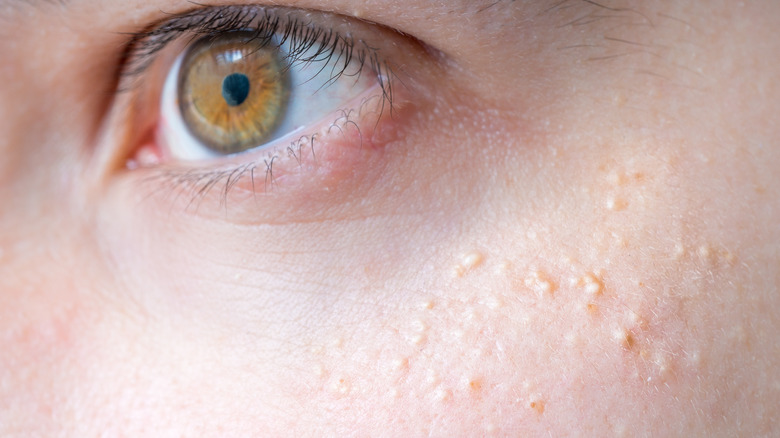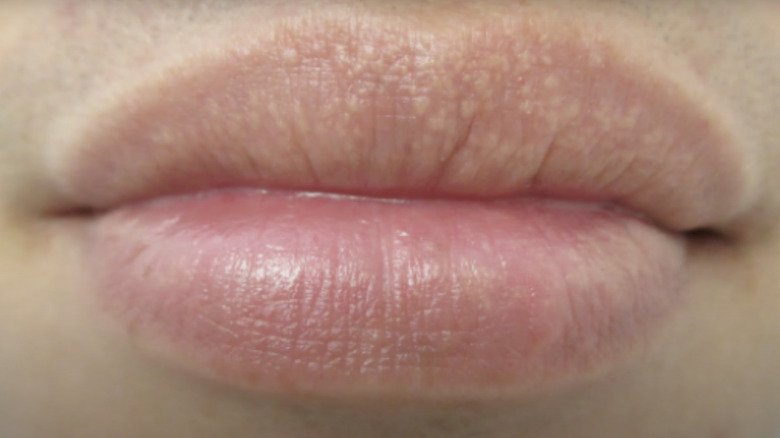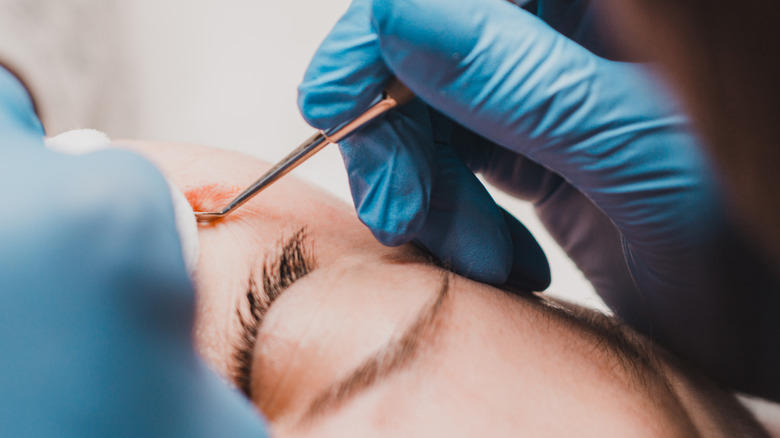Fordyce Spots Vs. Milia: What's The Difference?
When it comes to differentiating between two skin conditions that present similarly, such as Fordyce spots and milia, seeking help from a dermatologist is often the safest route. However, not all blemishes and imperfections require medical attention. Sometimes, the occasional skin issue can be treated at home with the right skincare.
Fordyce spots and milia may appear indistinguishable to the untrained eye, but they occur for unrelated reasons and require different treatments. As it turns out, Fordyce spots are enlarged sebaceous (oil) glands that form in clusters, according to the American Osteopathic College of Dermatology. Milia, on the other hand, is a type of benign cyst that occurs when keratin builds up under the skin, per the Primary Care Dermatology Society. Fordyce spots are often confused for milia, which can lead to ineffective remedies that end up causing more harm than good. While both conditions are harmless, it is normal to feel worried or insecure about the sudden appearance of bumps on your skin. Here's the lowdown on these two common cosmetic issues and how to treat them.
What causes Fordyce spots?
Fordyce spots appear in clusters of white or flesh-colored raised bumps on mucosal surfaces, such as the border of your lips, the inside of your cheeks, nipples, and sometimes the genital area, per Healthline. One of the telltale signs of Fordyce spots is that they only crop up in areas that lack hair, which differentiates it from milia and other gland-related conditions. These spots or granules are also entirely harmless, and you don't have to worry about spreading them to others.
"We are born with them, but they may appear more during times of hormonal change, such as during puberty or pregnancy," explained New York-based cosmetic dermatologist Dr. Michele Green in an interview with Byrdie. "They may also appear more visible in people who tend to have oily skin." That said, if the appearance of your Fordyce spots bothers you, consult a dermatologist to discuss treatment options, which may include laser skin resurfacing, cryotherapy, or topical creams, per the Cleveland Clinic.
What to do about milia
Milia or milk spots are tiny yellow-white cysts that form when dead skin cells or keratin build up in your pores, per the Cleveland Clinic. These hard bumps can pop up on most surfaces of the skin, but you will typically find them on the face, specifically around the eyes and cheeks.
In most cases, milia bumps will go away on their own, but you can also try applying a warm compress to the area to help them disappear. "The use of warm hydration can loosen up surface skin cells and help them slough away, opening up the milia," dermatologist Dr. Robyn Gmyrek shared with Ipsy. A dermatologist may also recommend a topical exfoliant containing salicylic acid for recurring milia or in-office extraction for stubborn spots.
Dermatologists do not recommend picking at your milia or Fordyce spots to avoid skin damage and scarring. If you are worried about the appearance, a doctor can suggest other exfoliation techniques.


